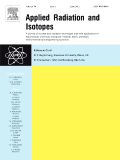
Applied Radiation and Isotopes
Scope & Guideline
Illuminating the Path of Isotope Research
Introduction
Aims and Scopes
- Radiation Dosimetry and Measurement Techniques:
Research in this area includes the development and validation of dosimetry methods, including thermoluminescence dosimetry, optically stimulated luminescence, and advanced detection systems for radiation measurement. - Radiopharmaceutical Development and Applications:
This scope encompasses the synthesis, characterization, and clinical applications of radiopharmaceuticals for diagnostic and therapeutic purposes, including PET imaging and targeted radionuclide therapy. - Nuclear and Radiation Safety:
Studies focusing on the evaluation and optimization of radiation safety protocols, including assessments of exposure levels, risk analysis, and the development of shielding materials. - Neutron Activation Analysis and Isotope Production:
Research related to neutron activation techniques for elemental analysis and the production of medical isotopes, emphasizing the optimization of reaction conditions and cross-section measurements. - Environmental and Health Physics:
Investigations concerning the impact of natural and anthropogenic radiation on health and the environment, including studies on radon levels, radioactive waste management, and the radiological assessment of materials. - Monte Carlo Simulations and Computational Methods:
Utilization of Monte Carlo simulations for modeling radiation interactions, dose calculations, and experimental setups to enhance the understanding of radiation effects in various applications.
Trending and Emerging
- Innovative Radiopharmaceuticals and Targeted Therapy:
There is a growing focus on the development of new radiopharmaceutical agents, particularly those that utilize novel targeting mechanisms for cancer treatment. This trend is driven by advances in personalized medicine and the need for more effective therapeutic options. - Machine Learning and Artificial Intelligence in Radiological Applications:
The integration of machine learning algorithms in analyzing radiation data, optimizing treatment plans, and enhancing imaging techniques is becoming increasingly prevalent, highlighting the potential for computational methods in improving clinical outcomes. - Advanced Dosimetry Techniques:
Emerging methods in dosimetry, including real-time monitoring systems and the use of novel materials for dosimetry applications, indicate a trend towards improving the accuracy and efficiency of dose measurement in clinical settings. - Sustainable Practices in Radiation Applications:
Research focusing on the environmental impact of radiation applications and the development of sustainable practices is gaining traction, reflecting a broader societal emphasis on environmental stewardship. - Neutron and Gamma-ray Imaging Techniques:
The development of advanced imaging techniques utilizing neutrons and gamma rays for non-destructive testing and evaluation in various fields, including materials science and medical diagnostics, is on the rise. - Health Physics in Radiotherapy and Diagnostic Imaging:
The application of health physics principles in optimizing radiotherapy and diagnostic imaging protocols is increasingly emphasized, underscoring the importance of safety and efficacy in patient care.
Declining or Waning
- Traditional Radiation Detection Methods:
While foundational, traditional methods of radiation detection are being overshadowed by newer technologies and methodologies that offer improved sensitivity and specificity, leading to a decline in publications focused solely on these older techniques. - Basic Nuclear Physics Research:
There has been a noticeable decrease in papers focused on fundamental nuclear physics research, as the journal shifts towards applications of radiation in clinical and industrial settings rather than theoretical explorations. - General Health Physics:
Health physics topics that do not incorporate modern diagnostic or therapeutic applications are becoming less common, as the journal emphasizes applied research that directly impacts clinical practices and patient care. - Stand-alone Environmental Studies:
Environmental studies that do not integrate radiation applications or health impacts are less frequently published, as the journal increasingly favors research that ties environmental measurements to broader implications in health physics or safety.
Similar Journals
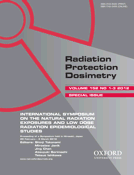
RADIATION PROTECTION DOSIMETRY
Advancing knowledge in radiation safety and dosimetry.RADIATION PROTECTION DOSIMETRY is a vital academic journal dedicated to the field of radiation protection, published by Oxford University Press. With an ISSN of 0144-8420 and an E-ISSN of 1742-3406, this journal serves as a platform for groundbreaking research and developments in dosimetry, health physics, and radiation safety spanning over four decades since its inception in 1981. Recognized with a Q3 ranking in multiple categories including Medicine (miscellaneous) and Public Health, this journal plays a key role in disseminating important findings that inform policy, enhance practice, and promote the protection of both individuals and the environment from radiation hazards. While currently not available as Open Access, the journal's curated content is essential for researchers, professionals, and students dedicated to advancing knowledge in radiation protection and related areas. Interested readers will find the latest research trends, case studies, and reviews invaluable for their work and studies within this multidisciplinary domain.
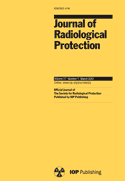
JOURNAL OF RADIOLOGICAL PROTECTION
Bridging research and practice in radiation protection.Journal of Radiological Protection, published by IOP Publishing Ltd, is a pivotal academic journal dedicated to advancing knowledge in the fields of radiology and radiation protection. Since its inception in 1988 and continuing through to 2024, this journal provides a platform for the dissemination of innovative research and critical reviews that explore the effects of radiation exposure on health and the environment. With an Impact Factor that places it among the Q3 category in Medicine, Public Health, Environmental and Occupational Health, as well as in Waste Management and Disposal, the journal is vital for professionals, researchers, and students keen on understanding the implications of radiological science. The Journal of Radiological Protection aims to contribute to improved practices and policies in radiation safety, making its findings essential for those involved in environmental health and public safety initiatives. Articles are accessible through various academic databases, ensuring widespread dissemination among the scientific community, thereby enhancing the journal's stature and influence in radiological research.
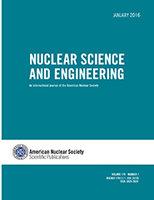
NUCLEAR SCIENCE AND ENGINEERING
Connecting Academia and Industry in Nuclear ResearchNUCLEAR SCIENCE AND ENGINEERING, published by Taylor & Francis Inc, is a leading journal in the field of nuclear energy and engineering, providing a vital platform for disseminating cutting-edge research and advancements from both academia and industry. With an ISSN of 0029-5639 and an E-ISSN of 1943-748X, the journal boasts a notable impact factor and is categorized in the Q2 quartile for 2023, reflecting its influence and quality in the field. Covering a comprehensive scope from the inception of nuclear technology in 1969 to contemporary advancements forecasted for 2024, it ranks #38 out of 77 in the Scopus Energy – Nuclear Energy and Engineering category, placing it in the 51st percentile. Although the journal is not open access, it remains essential for researchers, professionals, and students seeking to stay abreast of the latest developments and innovations in nuclear science. Located in the heart of Philadelphia, NUCLEAR SCIENCE AND ENGINEERING contributes significantly to the advancement of nuclear engineering knowledge and practice, making it a crucial resource for anyone involved in this dynamic field.

Nuclear Physics and Atomic Energy
Illuminating the path of atomic advancement.Nuclear Physics and Atomic Energy is a reputable open-access journal that focuses on the fields of nuclear physics and high-energy physics, providing a forum for researchers, professionals, and students to share their findings and advancements. Published by the Institute of Nuclear Research, National Academy of Sciences of Ukraine, this journal has been committed to disseminating knowledge since its inception in 2006, ensuring that scientific advancements remain accessible to a global audience. With an ISSN of 1818-331X and an E-ISSN of 2074-0565, the journal features a diverse array of articles that span the continued exploration and application of nuclear phenomena. Although currently categorized in the Q4 quartile for Nuclear and High Energy Physics in 2023, the journal is steadily working towards increasing its impact and engagement within the academic community. With a Scopus rank of #74 out of 87 in its category, it serves as a valuable resource for advancing crucial research in a vital scientific area. Researchers are encouraged to contribute their innovative studies to foster collaboration and knowledge sharing in this dynamic field.
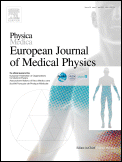
Physica Medica-European Journal of Medical Physics
Elevating Standards in Radiology and BiochemistryPhysica Medica - European Journal of Medical Physics is a premier peer-reviewed journal published by ELSEVIER SCI LTD, dedicated to advancing the field of medical physics. Established in 1989 and serving as a critical platform for innovative research, this journal covers a broad spectrum of topics within biophysics, radiology, and imaging sciences, consistently ranked in the Q1 category across these disciplines. With an impressive impact factor that highlights its influence within the scientific community—ranking 52/333 in Radiology, 42/243 in Physics and Astronomy, and 35/152 in Biochemistry—the journal is a valuable resource for professionals, researchers, and students aiming to contribute to the technological and methodological advancements in medical physics. Physica Medica is committed to fostering open dialogue and collaboration within the global medical physics community, although it currently does not offer open access options. The journal's extensive citation history and ongoing relevance underscore its importance in the continuous evolution of medical science.

Physics & Imaging in Radiation Oncology
Exploring New Frontiers in Radiation Therapy and ImagingPhysics & Imaging in Radiation Oncology is a premier journal dedicated to advancing the interdisciplinary field of radiation oncology through innovative research and imaging technologies. Published by Elsevier, this open-access journal has made its mark since its inception in 2017, ensuring that groundbreaking findings are accessible to a broad audience. With a strong focus on the integration of physics, imaging techniques, and oncology, the journal occupies esteemed positions in the academic landscape, ranking in the top quartile for Radiation and Radiology, Nuclear Medicine and Imaging as of 2023. The journal serves as a platform for researchers, professionals, and students to share insights and foster collaboration, ultimately improving patient outcomes through enhanced imaging and treatment modalities. Based in Ireland and operating from Radarweg 29, 1043 NX Amsterdam, Netherlands, the journal aims to bridge the gap between theoretical physics and practical applications in clinical settings.
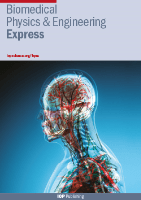
Biomedical Physics & Engineering Express
Transforming Research into Real-World SolutionsBiomedical Physics & Engineering Express, published by IOP Publishing Ltd, serves as a dynamic platform for the dissemination of groundbreaking research in the interdisciplinary domains of biomedical physics, engineering, and related fields. With a focus on innovative solutions for healthcare challenges, the journal extends its reach to a global audience, providing valuable insights that influence both academic research and practical applications. Operating under an open-access format, this journal ensures that vital scientific discoveries are readily available to researchers, professionals, and students alike. Ranking within the Q3 and Q4 quartiles across various categories—including Bioengineering and Biomedical Engineering—indicates its emerging influence in the scientific community since its inception in 2015. With an increasing footprint in Scopus rankings and a commitment to advancing knowledge in subfields such as biophysics and health informatics, Biomedical Physics & Engineering Express plays a crucial role in shaping future innovations in healthcare technology and patient care.
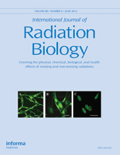
INTERNATIONAL JOURNAL OF RADIATION BIOLOGY
Bridging Research and Clinical ExcellenceINTERNATIONAL JOURNAL OF RADIATION BIOLOGY, published by Taylor & Francis Ltd, has established itself as a premier forum for the dissemination of innovative research related to radiation biology, covering emerging topics that are crucial within the fields of radiology, nuclear medicine, and ultrasound technology. With an ISSN of 0955-3002 and an E-ISSN of 1362-3095, this journal spans over six decades, from its inception in 1959 to 2024, reflecting a rich history of scholarly contribution and a dynamic approach to addressing current challenges in the discipline. Its reputation is highlighted by its Q2 rankings in both Radiology, Nuclear Medicine and Imaging and Radiological and Ultrasound Technology for 2023, underscoring its relevance in a competitive academic landscape, with Scopus rankings placing it in the top tier of its category. While operating under a traditional access model, the journal aims to connect researchers, professionals, and students, facilitating the advancement of knowledge and fostering a deeper understanding of the impact of radiation in various medical applications. The journal plays an essential role in shaping future research directions and enhancing clinical practices globally.

Radiological Physics and Technology
Advancing knowledge in radiological science.Radiological Physics and Technology, published by SPRINGER JAPAN KK, is a prominent journal that serves as a crucial resource in the multidisciplinary fields of medicine and radiation sciences. With an ISSN of 1865-0333 and an E-ISSN of 1865-0341, the journal has been converging impactful research from 2008 to 2024. It holds a commendable position in academic rankings, currently classified in Q2 in Physical Therapy, Sports Therapy and Rehabilitation and Radiation, along with Q3 for Medicine (miscellaneous) and Radiology, Nuclear Medicine and Imaging. The journal is well-regarded in the academic community, reflected in its Scopus rankings that place it in the upper tiers of its respective categories. Although it currently does not offer Open Access, Radiological Physics and Technology remains a pivotal publication for researchers, academics, and practitioners seeking to advance knowledge and foster innovation in radiological science. Its commitment to disseminating high-quality research ensures its continued relevance and importance within these fields.

NUCLEAR INSTRUMENTS & METHODS IN PHYSICS RESEARCH SECTION A-ACCELERATORS SPECTROMETERS DETECTORS AND ASSOCIATED EQUIPMENT
Fostering collaboration in the realm of nuclear instrumentation advancements.NUCLEAR INSTRUMENTS & METHODS IN PHYSICS RESEARCH SECTION A is a leading journal published by Elsevier, dedicated to the advancements in accelerators, spectrometers, detectors, and associated equipment relevant to the fields of nuclear and high energy physics. With its ISSN 0168-9002 and E-ISSN 1872-9576, this journal fosters knowledge sharing among physicists and researchers globally, providing a critical platform for both theoretical and experimental studies. Currently ranked in the Q2 quartile for both Instrumentation and Nuclear and High Energy Physics, the journal maintains a robust position in the competitive Scopus rankings, with noteworthy placements that underline its scholarly impact. As of 2023, it occupies the 38th rank in Nuclear and High Energy Physics and the 79th in Instrumentation, illustrating its relevance in the scientific community. Covering research spanning from its inception in 1983 to the projected completion in 2024, the journal caters to a diverse audience of researchers, professionals, and students eager to stay abreast of the latest innovations and techniques in the realm of nuclear instrumentation. Although it primarily operates under subscription-based access, it is instrumental in disseminating pivotal findings and experimental methodologies that drive progress in the scientific community.